
gthursby
-
Posts
43 -
Joined
-
Last visited
Content Type
Profiles
Forums
Gallery
Events
Posts posted by gthursby
-
-
-
-
I'm rigging my model of SCOTTISH MAID with some sails, but not in full sail. I'm hoping to use the configuration shown in the attached contemporary painting of her. The topsail yard seems to be on the mast but without a sail. There is no obvious furled sail on yard shown in the painting but would you expect to find one there? Also, would the yard in this state just be rigged with lifts and braces or would it also have ropes connecting it to the lower foresail yard?
Thanks, Graham
-
Thanks for the replies, but I'm trying to finish a 3/4 built kit model so I need some thread that matches the one that I've already used. I've no plans to build another vessel after this, so going down the route of making my own rigging is not really applicable.
I should have also mentioned that the colour is very different as well, so I ideally need to find some older material. Anyone know of a manufacturer who does this?
-
-
I've just reactivated a Artesania Latina model of the Scottish Maid which has lain dormant for 3 or so years. I found that I am short on rigging thread of certain thicknesses and so tried to order more. My problem is that none of the thread that I can buy (eg Caldercraft, Artesania Latina) look like the ones I'd been using. All the new ones seem to have a sheen that looks wrong when the rest of the rigging is done with a matt, more natural looking thread whereas the new ones look artificial. The model is about 3/4 rigged so I most certainly don't want to start again!
I can only assume that manufacturers have changed their rigging threads for some reason.
Anyone know where I can buy the "old" style of thread?
Graham
- mtaylor and Keith Black
-
 2
2
-
-
A stupid question - are reefing points on both sides of a sail?
What's the best way of making them? Some people seem to attach them directly to the sail; others to a strip of cloth which is then bonded to the sail.
Thanks
-
-
-
This a photo of the Aberdeen Museum model of "Scottish Maid" referred to by Wefalck. I think that I had seen it before but ignored it, presumably because it looks relatively crude. It does seem to be attributed to Capt John Smith, which makes it rather more interesting if correct. I think it would be reasonable to assume that the basic rig of the vessel is correct, albeit greatly simplified. It would be very interesting to see the model in more detail, but this seems to be the only photo of her on the Museum's website and its staff are on holiday, so are not available to answer any questions. MacGregor's plans which model builders seem to use as a starting point, even if building from scratch, are taken from the half hull model in Glasgow museum (for the ships lines) and the builder's accounts (for spar dimensions etc). Everything else is deduced from a painting of the Scottish Maid, pictures of contemporary ships and common practice at the time. As far as I can see he makes no mention in his book of the Aberdeen model.
-
I take your point, but I don't think I'll go to the bother of getting MacGregors plans. As I've gone on I've become more aware of the limitations of Artesania's model and if I'd known a few things at the time I was building the model I'd probably have done things a little differently, such as using thinner thread for the rigging. I'm not going to re-rig the ship though. Doing the ratlines once was more than enough!
-
Thanks for both of your replies. I've got photocopies of the relevant pages of Macgregors book and in the small picture in it, the rigging of the Scottish Maid looks closer to Petersson's book that Artesania, however it's not easy to tell from one small drawing. I think I'll just try to rig her with something that looks mechanically feasible; probably very much simplified rather than trying to unscramble the position and function of every possible rope. It's clearly a specialist subject that I don't really have the inclination to become too immersed in.
-
I would have thought that if you were climbing the ratlines the last thing you would want would be to have them tugged by a brace if the wind gusted.
- Rik Thistle and mtaylor
-
 2
2
-
Thanks for that, Richard. It looks as though Ian followed the Petersson book rather that Artesania plans.
This is the first model I've ever built, and I was completely unaware of how much modification the kit would need in order to produce anything even vaguely realistic.
-
After a hiatus of around 3 years I'm back trying to rig the Scottish Maid and, as previously, I'm struggling to make any sense of Artesania's rigging plans. I downloaded Petersson's book but recall that it was denounced on here as being very unreliable.
I'm currently trying to work out how to rig the braces. The Artesania plans (attached) look to my inexpert eye to look impractical. To attach one end of the foreyard brace to one of the shrouds seems to me to be rather dangerous. Peterssen's book has all the braces passing through blocks on the mainmast which looks more practical, but I've also seen pictures of braces being attached to the bulwarks much further aft, which mechanically I can see some advanges to.
The braces for the topsail yard brace look even stranger (to my eye) in the Artesania plans with one end of a brace being run through a block hanging from the mainmast stay (I hope I've got the rigging terms correct, but I wouldn't be surprised if I haven't)
The only contemporary illustration of Scottish Maid I've found is a painting (attached) which seems to show a brace attached to a shroud Maybe this is where Artesania got the idea from or, could it actually be correct? It depends on the expertise of the artist I guess, though I would have thought that a marine artist of the period would understand such things.
Any thoughts on which arrangement is most likely to be accurate?
I realise that my rigging will probably be, at best a gross simplification of the real thing, but I'd like to do something that looks at least mechanically possible.
-
I've started to rig my model of Scottish Maid and am thinking of putting sails on her. What is the best stage for doing this? Do I do all the standing rigging first? Should I attach the sails to the yards before rigging the yards? It seems to me that if I put too much rigging on the vessel then I will find lines getting in the way when I try to rig the sails.
-
20 hours ago, JerseyCity Frankie said:
I’m sure you don’t want to hear this, and it pains me to have to tell you, but Petersson’s Book is a trainwreck. It’s FULL of wrong information. He based his “research” on three unnamed individual models, aparently tracing the run of each line and providing each with its own clearly drawn illustration. A great idea! Unfortunately either he or the model builder or both have made errors almost too numerable to count. Almost every page of his book has at least one error in it, small or large. Usually the errors are concerned with the lead of multiple part tackles, stuff like Spanish Burtens. Often the problems are simple matters of where the hauling end emerges from otherwise OK gear, but surprisingly often the rigging he’s illustrated couldn’t function properly at all as drawn. Which is amazing considering he’s describing it as a book on rigging. And many here tout his work as useful and valuable. I’m saying it does more harm than good due to the huge numbers of inaccuracies. The fact that he’s reached so many people with so much bad information is, in my opinion, bad for the entire hobby.
So what would you recommend as a reliable source of into for a vessel of the type that I am building?
-
-
It wasn't supposed to be like this! I bought the kit as a retirement project about 3 years ago (it's been slow going!) and I naively thought that all I would have to do would be to follow the plans and instructions and all would be fine. It soon became apparent that this was not the case; the planking scheme was nonsensical so I had to find out how to do that a bit more realistic. Then I decided to research the ship to make it less anonymous and discovered that the method of locating the bowsprit differed from what McGregor described as the builder's characteristic method and was shown as such on his plans. Various inconsistencies have made me more and more suspicious of Artesania's plans, hence some of the questions here. My wife has pointed out that no-one else looking at the model would know what was right and what was wrong. This is true, but not the point; to me it is a waste of time making something that I think is badly inaccurate; I am trying to do it the best as I can for my own satisfaction rather than for anyone else. I guess that must be the same for most people here.
-
On the Atesania plans, some lines such as the vangs and topsail sheets appear to terminate at eyebolts on the deck. How would this be done? I'm guessing the the lines are not just tied to the eyebolts.
Thanks again to all who have responded to my earlier questions - I seem to be spending more time trying to understand what to do with the different elements of rigging than doing the actual physical work. I think that I'm getting there, albeit slowly, though doubtless there will be many more questions to come!
-
Thanks for that. I guess that there is no definitive answer and that anything is going to be an educated guess based on knowledge of rigging practices of that era.
Looking at the Model Shipwright pics I was wondering how the bands to which the blocks are attached were made.
Also in MacGregor's plans and the Artesania model there is a binnacle between the steering wheel and the deckhouse that is not shown in the pics. Is it located elsewhere or omitted entirely? I haven't put one in yet as it seems to me that one placed there would impede the entrance to the deckhouse immediately in front of it.
-
I'm trying to work out where and how to fit the spanker sheets (I hope that is the correct term ) to the deck of the Scottish Maid. It is very unclear in the kit diagrams. I've looked at the Underhill book (someone gave these to me when I was about 12 and lay untouched for about 50 years!!).
I hope that I've got the terminology correct (I presume that these sheets are to control how much the main boom moves). Underills book shows 2 double blocks that can rotate about the boom but doesn't show where the other blocks are attached to the deck. It's very hard to see on the very low resolution diagram in the Underhill book, but they look as though they are attached to the top of the bulwark, though I would have thought this would be unlikely. Also, where would the end of the rope be belayed? Thanks for any help
-
Thanks for the detailed reply. Probably a silly question but how and where are the "non-pulling" (I've no idea what the technical term is!) ends of the halliards and boom lifts fixed? There looks to be at least 1 block short on the plans diagram to me. The only plans of her that I've found were drawn by David McGregor and these are reconstructions made using drawings etc of similar vessels built by the same builders. I don't own his plans as such, but I photocopied a few pages about her from his book on Fast Sailing Vessels

.jpg.22290e773ea9a12a8aa35ae240533831.jpg)
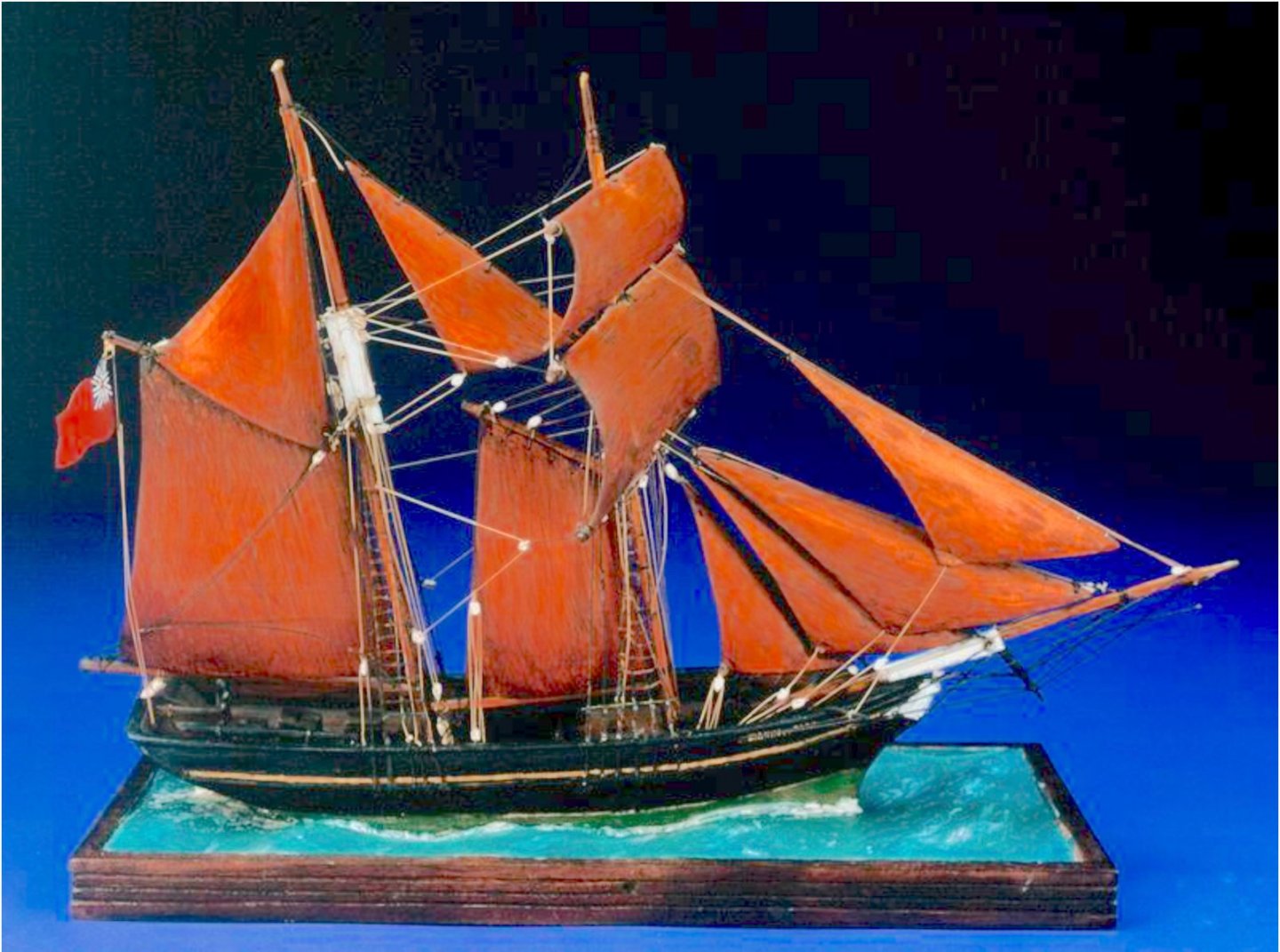
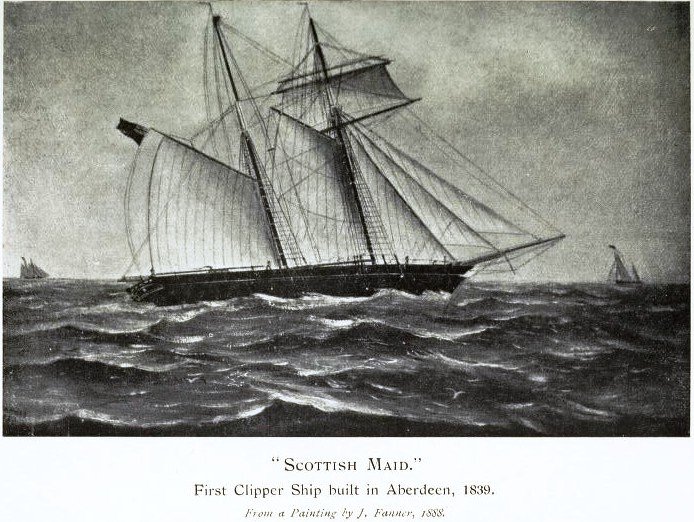
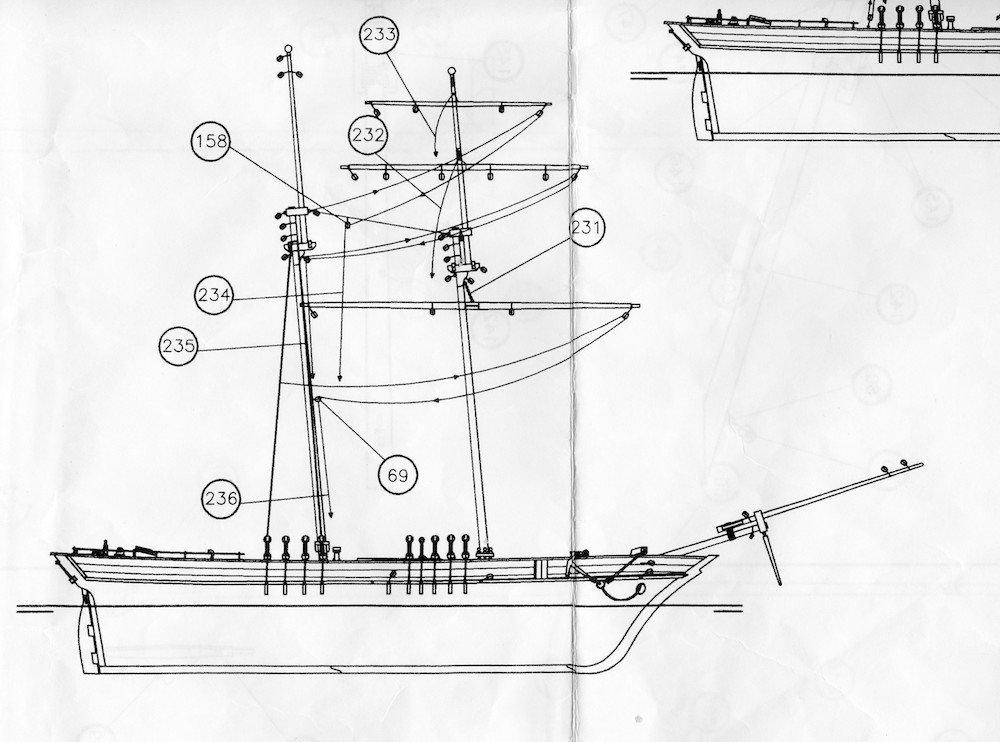
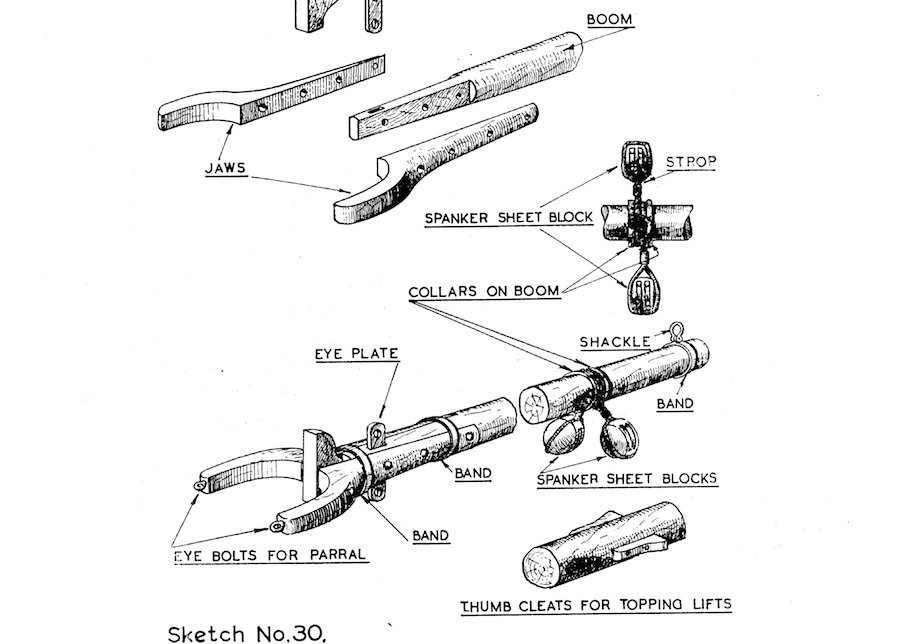
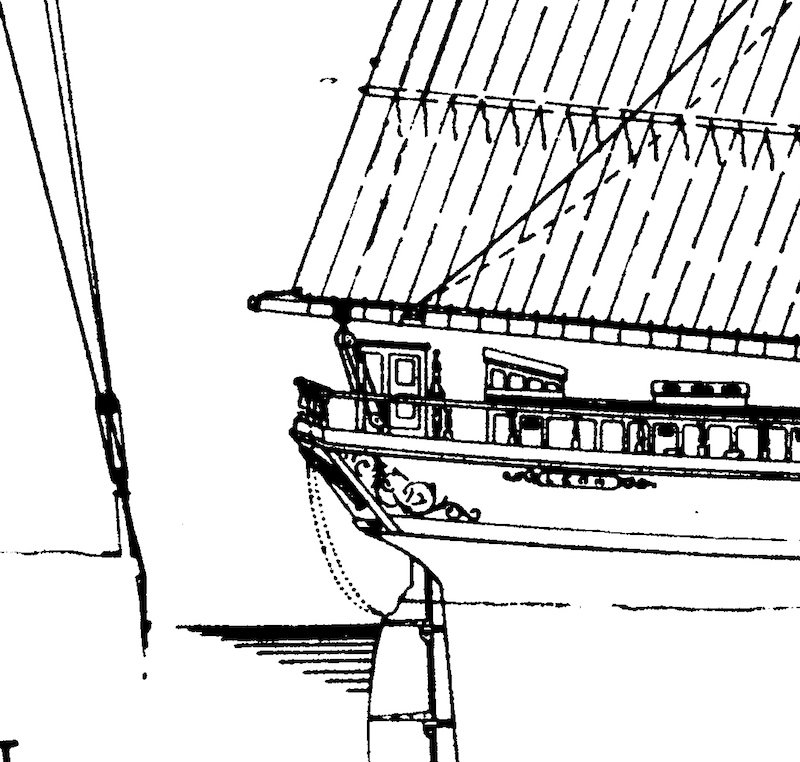
Scottish Maid Topsail Yard
in Masting, rigging and sails
Posted
Where would the topgallant yard be kept when not required? Somewhere on the deck or kept atop the mast with no sail or with a furled sail?